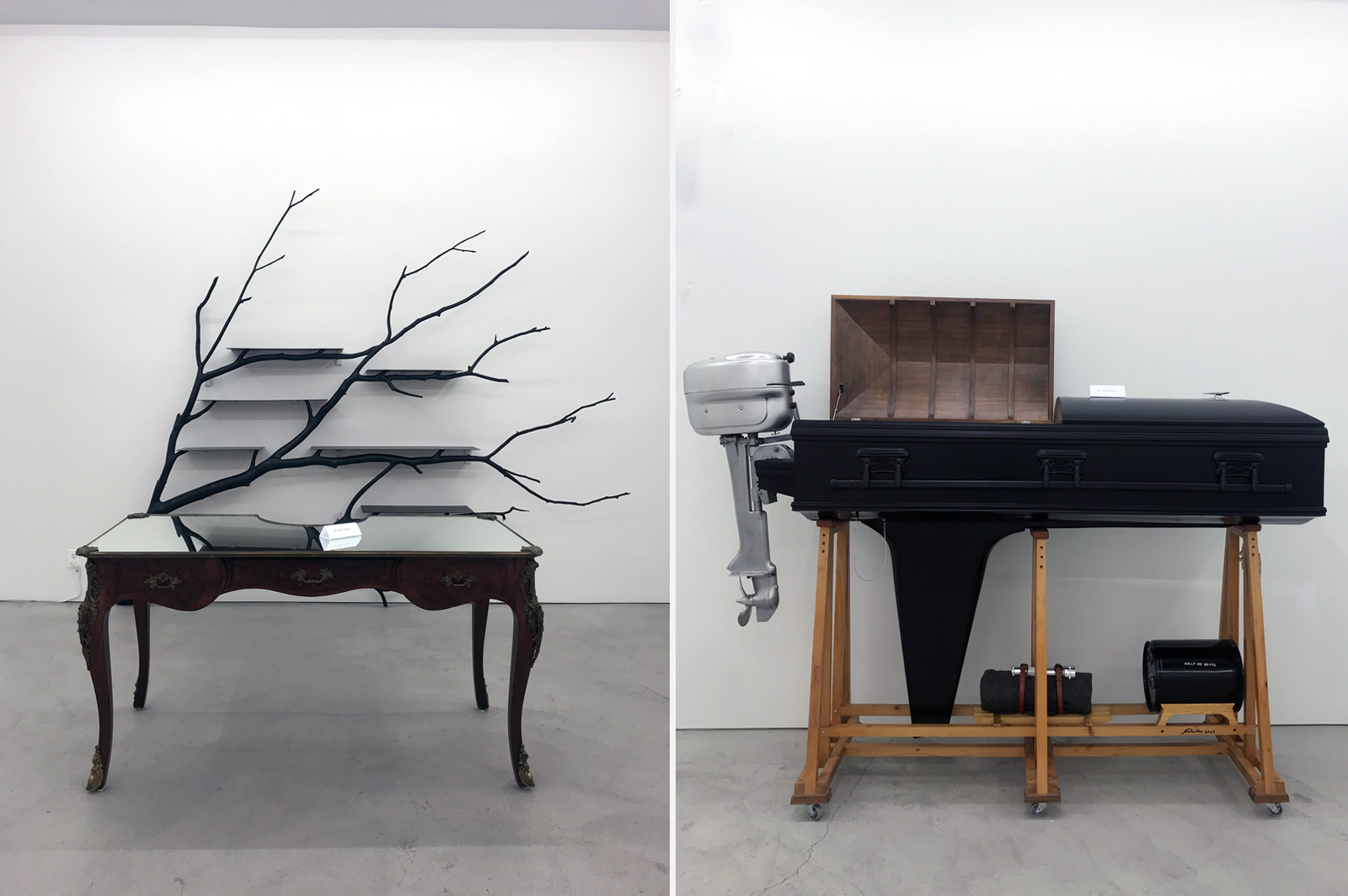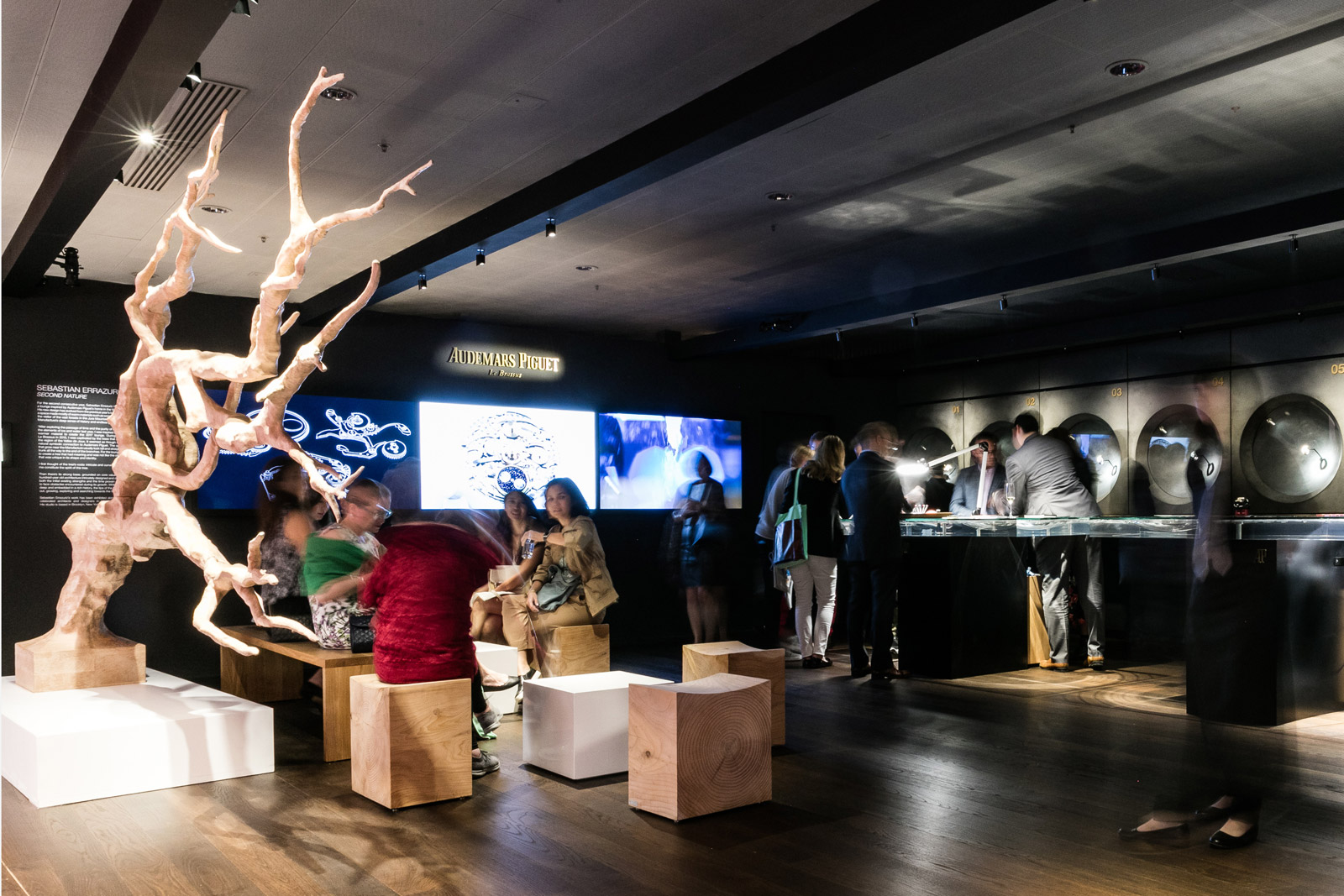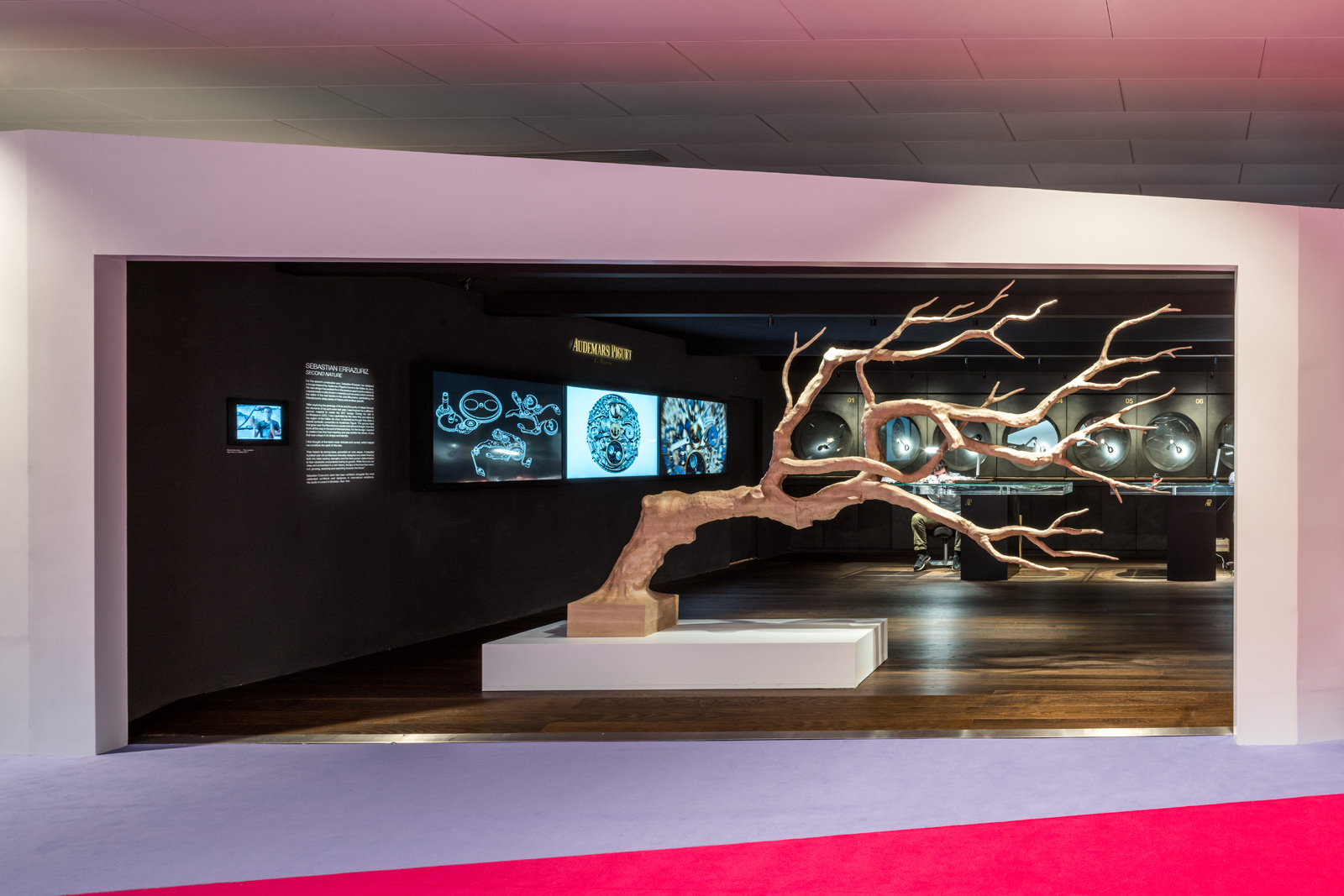Artist Sebastian ErraZuriz’s Wondrous Sculptural Works
From his new Bronx studio to a time-defying Art Basel commission by Audemars Piguet

Movement defines artist and designer Sebastian ErraZuriz. Many of his cabinet sculptures are built to change shape with a gentle touch. Light art flicks from one message to another and back again. The artist himself stays in constant movement, be that from project to project or within his new Bronx studio and exhibition space, a recent shift he made from Brooklyn. Even his thought-provoking large-scale commission by luxury watch brand Audemars Piguet addresses the idea of movement, though, over time. This piece, known as “Second Nature,” has changed subtly as it’s moved from installations at every Art Basel location. It will settle next in Miami, in full bloom for the first time. The Chilean-born mastermind deals in the worlds of wonder and whimsy, but a thorough look at any of his work reveals a comedic darkness—and an obsession with motion and that which is uncontrollable.

“It’s a good change,” ErraZuriz says of the new Bronx space, in Mott Haven just above Manhattan and set between a modern cafe and an untouched neighborhood bar. “My lease in Brooklyn was up. The price goes up as a neighborhood gentrifies. It’s almost part of an artist’s general management to calculate every five years if you need to move your space. Artists move in. Developers win. Artists move out.” Because of the size of ErraZuriz’s pieces, it’s evident that he needs a large space. This means exploring the unexpected. A friend of his suggested the South Bronx and the rest is history.

To unveil the studio to the public, ErraZuriz has set up an exhibition right now featuring two different bodies of work. They also happen to be collections he is quite fond of. “I wanted to keep pieces from both of these. Each one is an original, either drawn from my own collection or prototypes that I kept incase I needed to produce another one. It’s easier to fabricate from one piece than to search for a blueprint created four years ago. It’s more efficient to check it out, review it and see how it is made.” When entering the space, beyond two neon word art pieces, it’s quite easy to divide everything within into the two collections.

“One half are these kinetic mechanical cabinets that are basically an exploration on how you can break open the box,” he continues. “In that series, it’s all about the technicality and the ingenuity and fighting with the material to get it to work almost like a physical, solid origami—to fold it and open it in a way that each piece can illustrate the breaking of a box or the removing of restraints of any situation.” These pieces all fall in a series ErraZuriz hopes to continue producing in perpetuity, because they require challenging and critical engineering thought. Each of these boxes generates surprise and wonder. They captivate attention.

ErraZuriz’s second series is one of absurdity. As he begins to breakdown, “it’s about the decontextualization of preexisting elements that are transformed so that the concept behind them and the ideas change.” Basically, it’s the smashing together of symbolism and ideas, keeping two distinct concepts intact while generating a third message. Also, all these pieces happen to be functional, sculptural furniture as well. From a chicken with a light bulb as a head to a coffin boat, the layers are easy to peel apart but his vision is certainly unlike any other.

“There are several qualities I demand from work,” ErraZuriz furthers. “It must be something you haven’t seen before. If life is short and I am thinking of mortality and time, these big themes, it doesn’t make sense to do something someone has already done.” Rather, he wants to dig for new means of representation. “Also,” he adds, “my work is an excuse for a conversation. I try to make them as beautiful as possible but it’s more about illustrating something that creates impactful dialogue.” Even his darkest pieces, addressing death or speaking out with aggression, there’s humor at play. He admits that humor in art acts as a great lubricant for conversation.

With Art Basel Miami on the horizon, visitors to the fair may have a chance to see his “Second Nature,” set within the Audemars Piguet booth. It’s the second year in a row the brand has commissioned a work from ErraZuriz. And it’s the third stop of the year for this work, as it’s already been to Basel, Switzerland and Hong Kong. Each stop, ErraZuriz tweaks the work to represent growth over time. “It seems like a single tree branch,” he says. “What is really happening is that I am transforming nature. It’s almost a Frankenstein of parts that all get to be assembled and connected. That constitutes the message.”

“It’s constructed like a butcher’s block with seams and grains,” he continues. “From afar, it seems to be one of those trees you find at the top of a hill by the sea where the wind has been battering it for decades. It looks shaped by circumstances and the fight against time.” That, however, isn’t what it is. “When you see it up close, you realize it is a fake tree. You understand that it’s a branch that was created out of planks that were once a tree themselves.” It’s performative in its fabrication, and according to ErraZuriz it addresses the ideas of endurance and exhaustion.

This is an homage to the watchmakers—and the amount of time it takes to construct a watch and finish it all by hand. “For this, I’m adding little branches that are sprouting, over the iterations, and it all goes back to my obsession with layer and time.” The maple exudes a powerful beauty and the details reveal the sheer amount of work that went into making it a possibility. In many ways, “Second Nature” is much like ErraZuriz himself: thorough, imaginative, surprising and, of course, always in movement.
Studio images by Cool Hunting, all other images courtesy of Audemars Piguet












